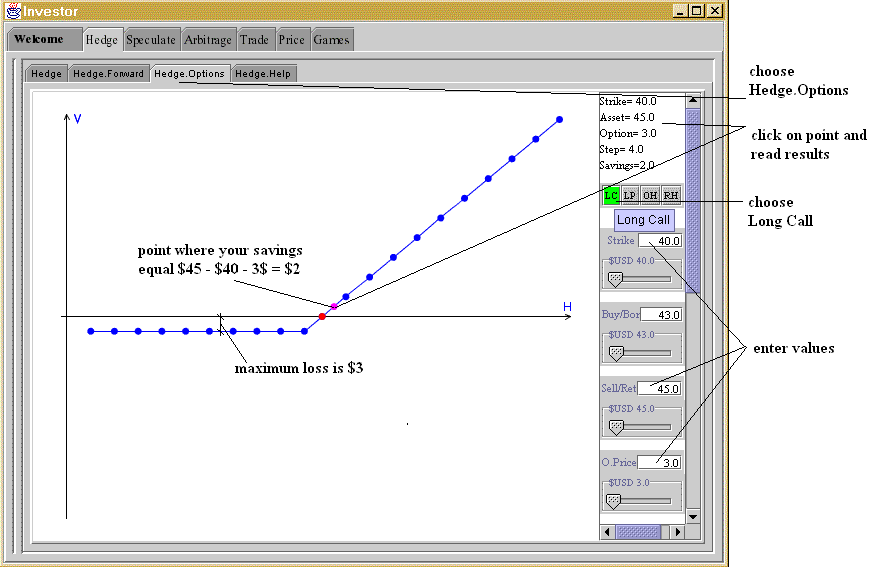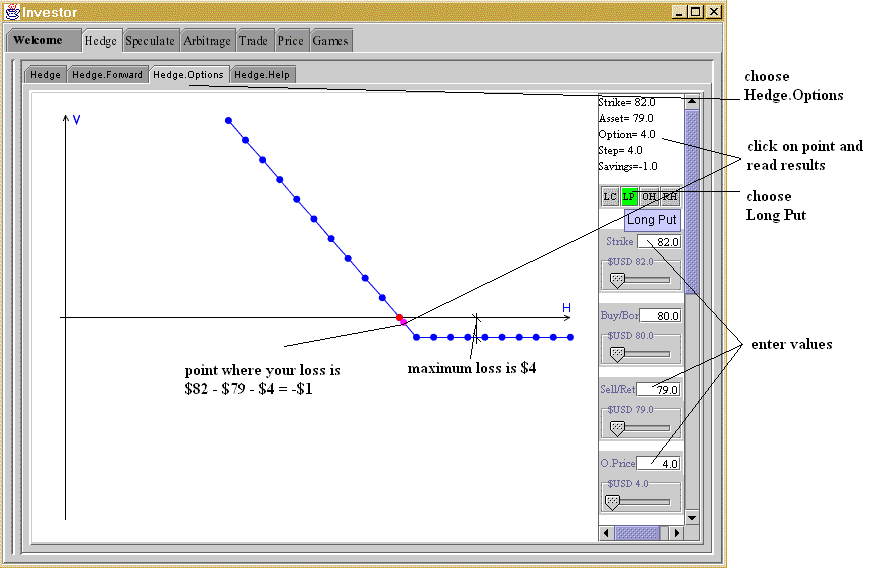

or $2/$40*100% = 5% of initial stock price. If you initially hadn't bought Call option, you'd buy the stock in the market for $45 and potentially lose (wouldn't save)
or $5/$40*100% = 12.5% of initial stock price. $3 you paid for the option is insurance for risk elimination. If price of your stock had gone down and became less than strike price, then you would discard the worthless option and buy the stock in the market for this low price. Your maximum loss is equal to amount you paid for the Call option. In the case above it is $3. This case in Investor is shown below

Another risk reduction strategy is used when you lend your underlying asset. For example if somebody borrowed XYZ stock from you, you might be afraid that the stock price would fall. In that case your stock, after returned to you, would have less value. To eliminate this risk you can buy Put option (Long Put) on this stock. For example, let's say you lend the stock and it's price is $79. If price falls and by the stock return time it's $75 then your loss is:
or $4/$79*100% = 5.06% of initial stock price. If you initially had purchased the Put option (Long Put) on this stock for $4 and strike of $82, then after getting back your stock you could exercise Put option, sell your stock for strike price $82, and your loss would be
or $1/$79*100% = 1.27% of initial stock price, much better then 5.06% without hedging. This case in Investor is shown below
